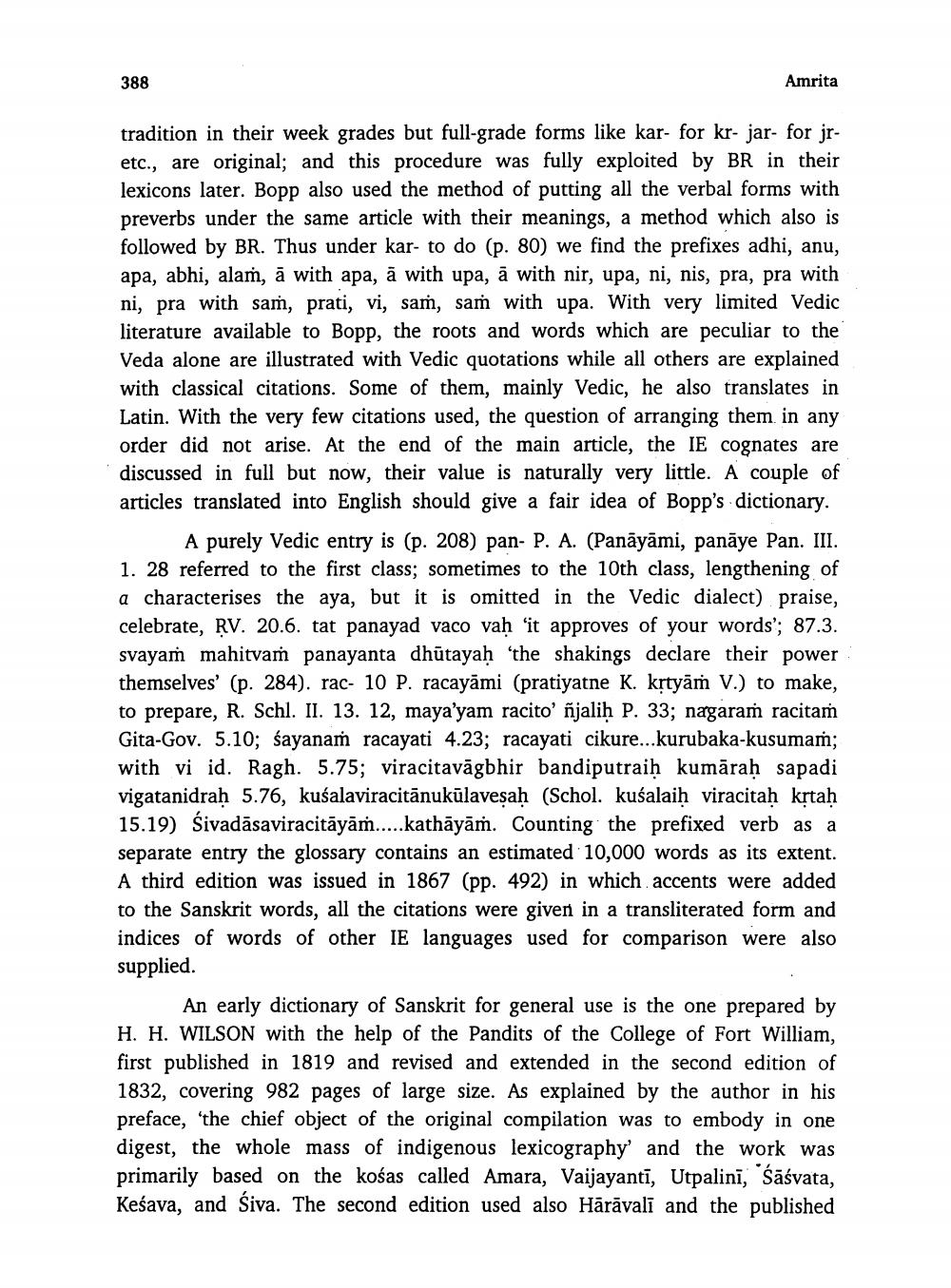________________
388
Amrita
tradition in their week grades but full-grade forms like kar- for kr- jar- for jretc., are original; and this procedure was fully exploited by BR in their lexicons later. Bopp also used the method of putting all the verbal forms with preverbs under the same article with their meanings, a method which also is followed by BR. Thus under kar- to do (p. 80) we find the prefixes adhi, anu, apa, abhi, alam, ā with apa, à with upa, ā with nir, upa, ni, nis, pra, pra with ni, pra with sam, prati, vi, sam, sam with upa. With very limited Vedic literature available to Bopp, the roots and words which are peculiar to the Veda alone are illustrated with Vedic quotations while all others are explained with classical citations. Some of them, mainly Vedic, he also translates in Latin. With the very few citations used, the question of arranging them in any order did not arise. At the end of the main article, the IE cognates are discussed in full but now, their value is naturally very little. A couple of articles translated into English should give a fair idea of Bopp's dictionary.
A purely Vedic entry is (p. 208) pan- P. A. (Panāyāmi, panāye Pan. III. 1. 28 referred to the first class; sometimes to the 10th class, lengthening of a characterises the aya, but it is omitted in the Vedic dialect) praise, celebrate, RV. 20.6. tat panayad vaco vah 'it approves of your words'; 87.3. svayam mahitvaṁ panayanta dhūtayah 'the shakings declare their power themselves' (p. 284). rac- 10 P. racayāmi (pratiyatne K. krtyāṁ V.) to make, to prepare, R. Schl. II. 13. 12, maya'yam racito' ñjaliḥ P. 33; nagaram racitam Gita-Gov. 5.10; śayanam racayati 4.23; racayati cikure...kurubaka-kusumas; with vi id. Ragh. 5.75; viracitavāgbhir bandiputraih kumāraḥ sapadi vigatanidrah 5.76, kušalaviracitānukūlavesah (Schol. kušalaih viracitah krtah 15.19) Śivadāsaviracitāyāṁ.....kathāyām. Counting the prefixed verb as a separate entry the glossary contains an estimated 10,000 words as its extent. A third edition was issued in 1867 (pp. 492) in which accents were added to the Sanskrit words, all the citations were given in a transliterated form and indices of words of other IE languages used for comparison were also supplied.
An early dictionary of Sanskrit for general use is the one prepared by H. H. WILSON with the help of the Pandits of the College of Fort William, first published in 1819 and revised and extended in the second edition of 1832, covering 982 pages of large size. As explained by the author in his preface, 'the chief object of the original compilation was to embody in one digest, the whole mass of indigenous lexicography and the work was primarily based on the kośas called Amara, Vaijayantī, Utpalini, śāśvata, Keśava, and Siva. The second edition used also Hārāvali and the published




